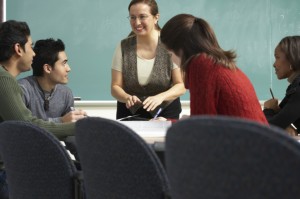
Different levels of experience and expertise create a vibrant learning environment.
Joe Ross leads the California region of Citizen Schools, a nonprofit that partners with middle schools to expand and re-imagine the learning day for low-income children. The organization draws thousands of volunteers into classrooms every year to teach 10-week “apprenticeship” courses where students learn about a variety of professions and fields firsthand.
By Joe Ross
My daughter recently broke her finger playing basketball. When we went to the clinic, the waiting room was packed with dozens of patients, and there were only a couple of medical doctors on duty. We spent 20 minutes with a nurse, ten minutes with the X-ray technician, seven minutes with the orthopedic resident, and just two to three minutes with a doctor. Against apparent odds, our visit turned out very well. Thanks to the combination of talents, expertise and communication styles provided by several professionals, my daughter experienced a remarkably effective – and efficient – healing experience.
In the school day of the future, imagine a similar scenario playing out in classrooms and schools here in California and across the country. The role of the teacher would evolve from that of a soloist to a choreographer, bringing together people and resources in different combinations to create a vibrant learning environment that efficiently serves a growing, evolving population and provides enrichment through a combination of caring relationships.
Citizen Schools, the nonprofit organization that I work for, was founded on the premise that everyone has something to teach. Our founders had their eyes on two assets: time and talent. Sixteen years later, the organization is partnering with schools across the country to lengthen the school day for thousands of students by mobilizing a “second shift” of educators.


